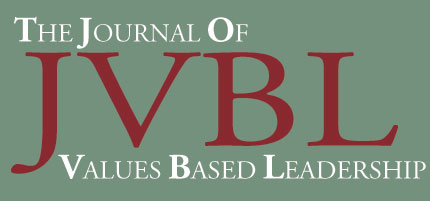- CONTENTS:
- Letter from the EditorLetter of Welcome by Senator Dick LugarFundamental Moral Orientations: Implications for Values-Based LeadershipAssuming the Leadership Role on Climate Change and Energy SecurityWe Lead from the Inside OutCitizen Engineers: Leaders in Building a Sustainable WorldTable of ContentsTurning Your Values into ValueValues‑Based Leadership: How Our Personal Values Impact the WorkplacePositively Deviant Organizational Performance and the Role of Leadership ValuesNotes Toward a Definition of Values‑Based LeadershipTable of Contents
- CITIZEN ENGINEERS: LEADERS IN BUILDING A SUSTAINABLE WORLD
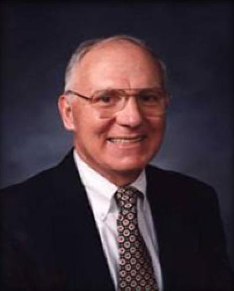
JOSEPH “BUD” AHEARN, SVP CH2M Hill, DENVER, COLORADO
“The junior officers and NCOs who survived the war were the leaders in building modern America. This was in some part thanks to what they had learned in the Army, primarily how to make decisions and accept responsibility.”
Citizen Soldiers:
–Stephen E. AmbroseIntroduction
Our nation and the world have an enormous need for engineering services. These needs stem from public demand for new and upgraded civil infrastructure, environmental stewardship and advanced solutions for energy, water, and climate change. The driver of these needs is humankind. People all over the world are calling for a higher quality of the built environment, for improved environmental stewardship, energy and water management, and greater social equity… a better quality of life.
 This glut of societal needs present obvious and imposing engineering and technological challenges. But just as American G.I. “citizen soldiers” returned home from WW II to a society that beckoned for civic leadership beyond their military training, today’s engineers confront a world of finite resources, opposing stakeholder interests, financial limitations, and competing economic pressures that demand civic leadership beyond formal engineering schooling. More and more often, the expertise demanded of engineers today is a capacity not just for technological problem solving, but also for a holistic understanding for how things work in a much broader context; a context that:
This glut of societal needs present obvious and imposing engineering and technological challenges. But just as American G.I. “citizen soldiers” returned home from WW II to a society that beckoned for civic leadership beyond their military training, today’s engineers confront a world of finite resources, opposing stakeholder interests, financial limitations, and competing economic pressures that demand civic leadership beyond formal engineering schooling. More and more often, the expertise demanded of engineers today is a capacity not just for technological problem solving, but also for a holistic understanding for how things work in a much broader context; a context that: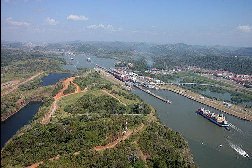
- Contemplates the greater needs and constraints of modern society
- Takes into consideration things like resource depletion, financial viability, risk analysis, total life-cycle consequences, supply chain reliability, facility operations and maintenance, and economic development
- Promotes progressive decision-making in a world of competing interests
- Delivers a sustainable, improved world to future generations.
The Leadership Imperative
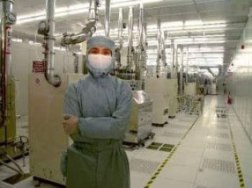 Traditionally, engineers have been driven to make technology work for their clients. And while that remains at the heart of the engineering value proposition, technological integrity now represents a fundamental prerequisite of the engineering profession; seldom does it represent a significant differentiator. Engineering leadership that serves clients’ full interests starts with structural and systems integrity, but it goes far beyond the technological realm.
Traditionally, engineers have been driven to make technology work for their clients. And while that remains at the heart of the engineering value proposition, technological integrity now represents a fundamental prerequisite of the engineering profession; seldom does it represent a significant differentiator. Engineering leadership that serves clients’ full interests starts with structural and systems integrity, but it goes far beyond the technological realm.Today, leading “citizen engineers” must anticipate not just client needs and project technical requirements, but they must develop solutions and deliver projects that address community, customer and other affected stakeholder interests. In collaboration with clients, “citizen engineers” must deliver infrastructure and technological systems that focus not just on improving client facilities and operations, but building a better world in the process. The measures of a better world must often include creating new economic opportunity, strong environmental stewardship and significant social benefits.
 The core of the engineering mission is the belief that every professional serves from a platform of specialized knowledge acquired from long and intensive academic preparation and operational experience. Inherent in this mission is the foundational belief that there is more to the make-up of an engineer-leader than specialized knowledge. The role comes with a higher calling and purpose, one focused on shaping and developing a world that we trust will be better because of the professional contributions we make.
The core of the engineering mission is the belief that every professional serves from a platform of specialized knowledge acquired from long and intensive academic preparation and operational experience. Inherent in this mission is the foundational belief that there is more to the make-up of an engineer-leader than specialized knowledge. The role comes with a higher calling and purpose, one focused on shaping and developing a world that we trust will be better because of the professional contributions we make.Ralph R. Peterson, CH2M HILL Chairman and CEO, expresses it this way:
The magnificence of science, engineering and construction professions, is that they are capable of creating a non-zero sum game for our planet's economic growth... making more for all through ingenuity and creative resource utilization. Engineering, architecture and the applied sciences are the key professions capable of doing this and that should be a source of pride for all of us engaged in those activities.
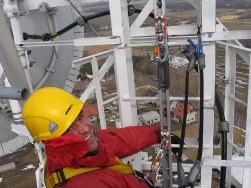 For engineers to step forward as “citizen engineer” leaders today often means stepping away from the personal attributes and character traits that first led them down an engineering career path. Intense, isolated and highly focused thinking may represent invaluable talents in the academic engineering world. But in a “citizen engineer” leadership world, team building, consensus-management, listening, communicating and vision shaping take center stage.
For engineers to step forward as “citizen engineer” leaders today often means stepping away from the personal attributes and character traits that first led them down an engineering career path. Intense, isolated and highly focused thinking may represent invaluable talents in the academic engineering world. But in a “citizen engineer” leadership world, team building, consensus-management, listening, communicating and vision shaping take center stage.Just as the “citizen soldiers” who returned from World War II accepted their civic leadership mantle to become the “greatest generation,” tomorrow’s “citizen engineers” must prepare for an expanded highperformance role. And this new expanded role must truly deliver a combination of technical, economic, social, and environmental values that truly improve people’s quality of life.
“Citizen engineers” who accept this leadership challenge can expect to be energized by building and belonging to a potent human force so strong that they can make their purpose happen. And when they move from being the smartest kids in the class to being builders of strong, competitive, and creative teams, they will begin to realize their full potential. And in realizing their personal full potential, they will deliver more abundant solutions for their clients and the world at-large. They will deliver truly nonzero sum solutions that don’t focus on slicing up a perceived pie with inherent limits, but actually create limitless pies to serve society’s greater good.
High‑performance, Purpose-Driven Team Building
 Building and leading the high performance teams needed in the days ahead will require leader-engineers to align the diverse interests of elected officials and government regulators, business leaders, financiers, labor leaders, and nongovernmental organizations such as environmental and community groups. Such a formidable task requires forceful leadership resulting from purpose-driven vision, goal setting, strategy shaping, aligning people and resources, and motivating, inspiring, and helping others. While these attributes may not be standard requisites of classic engineering curricula, they represent essential skill components for “citizen engineers” to lead high performing teams of diverse interests and perspectives.
Building and leading the high performance teams needed in the days ahead will require leader-engineers to align the diverse interests of elected officials and government regulators, business leaders, financiers, labor leaders, and nongovernmental organizations such as environmental and community groups. Such a formidable task requires forceful leadership resulting from purpose-driven vision, goal setting, strategy shaping, aligning people and resources, and motivating, inspiring, and helping others. While these attributes may not be standard requisites of classic engineering curricula, they represent essential skill components for “citizen engineers” to lead high performing teams of diverse interests and perspectives.When we examine high performing teams closely, clusters of knowledge, specialized skills, and behaviors are repeatedly evident. A checklist of pertinent competencies would include:
- Interpersonal savvy
- Business competence and judgment
- Communications skills
- Strategic thinking and planning
- Prioritizing and flexibility
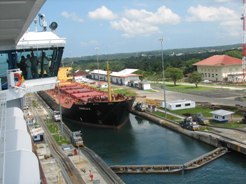 Looking beyond these skill sets and competencies, however, you find a certain personality profile of “citizen engineer” leaders, a profile of people who are selfless, others-centered, vision-committed, inclusive and driven by deep inner character. As legendary UCLA basketball coach John Wooden instructs, “The best leaders are more interested in finding what’s right than in always being right. They understand how much more can be accomplished if no one cares who gets credit.”
Looking beyond these skill sets and competencies, however, you find a certain personality profile of “citizen engineer” leaders, a profile of people who are selfless, others-centered, vision-committed, inclusive and driven by deep inner character. As legendary UCLA basketball coach John Wooden instructs, “The best leaders are more interested in finding what’s right than in always being right. They understand how much more can be accomplished if no one cares who gets credit.”Historic Perspective – Contemporary Driving Forces
The stories of history and academic research that stretch from the master builders of Egypt, the Industrial Revolution, the Panama Canal, the Apollo moon mission to current day aviation, space, and information technology industries, all consistently point up the need to work across and outside conventional boundaries. These boundaries may include personal, technical, economic, environmental, political and national limits, and they may be either self-imposed or externally enforced.
The forces that shape the engineering and construction industry today demand that engineer leaders master the art of working outside of technical stove pipes and across the varying vested interests of organizations that include environmental, academic, industry leaders and other stakeholders. These driving forces are compounded by mounting demands on “citizen engineers” such as:
- The constant flow of new technology that requires a professional commitment to continuing and life-long learning
- Globalization and expanding democratization that compel global scale competitiveness and a capacity to embrace international project partnering
- Clients’ demands for single-source, full service engineering, procurement, construction and operations services that require a comprehensive grasp of all aspects of infrastructure planning, design, development and operations
- Increased demands for environmental stewardship and social responsibility that impose a heightened degree of public accountability for project development.
 This combination of our industry’s history, evolution, and current day drivers reinforces the engineering and construction industry’s principled need for values-based leadership.
This combination of our industry’s history, evolution, and current day drivers reinforces the engineering and construction industry’s principled need for values-based leadership.Citizen Engineers at Work Creating Quality of Life Improvements
What roles will “citizen engineers” tackle? Real work and real project roles provide the best clarifying “quality of life” examples. Examples such as:
- Designing, building and operating water and wastewater projects in water-scarce parts of the world in which 35,000 infants die every day due to the absence of clean water and sanitation
- Roads, airports, seaports, and rail systems that enable people and products to move to world markets for economic, security, and recreational benefits
- Environmental stewardship projects to protect the natural ecosystem and to clean up and prevent contamination and the consequences of human-caused climate change
- Industrial plants and systems that build our economies, improve our health, enable national productivity improvements, spread wealth to impoverished areas, as well as provide power and electricity.
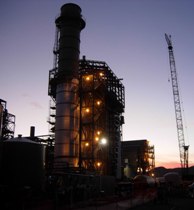 In short, the mission of “citizen engineers” is to deliver these value-creating projects and services in the context of the drivers of the engineering and construction industry and the demands of our clients. Both the drivers and demands shape the uniqueness (the situation) of every project.
In short, the mission of “citizen engineers” is to deliver these value-creating projects and services in the context of the drivers of the engineering and construction industry and the demands of our clients. Both the drivers and demands shape the uniqueness (the situation) of every project.Project Leadership
Effective project leaders adapt to the situation but lead with intention. Leaders intentionally envision project outcomes (physical plant or system and social, economic and environmental benefits) and then align all the stakeholders who can make these outcomes happen. Leadership is then both situational and intentional. As engineer leaders work together with project stakeholders to develop and deliver their projects, they encounter differing organizational cultures and competing values expressed by individual stakeholders. These cultures represent a set of attitudes, core values, goals and practices that characterize an organization. In short, culture is shown by how we engage, how we behave, what we hold dear, and where our aspirations lie. For example:
- Our behavior might be characterized as creative or controlling, competitive or collaborative
- The things we hold dear (values) might be honesty, integrity, trust, innovation and people-centric behavior such as respect, safety, and cooperation, challenging work growth, and personal accountability
- Aspiration targets may focus on becoming a regional, national, or global industry leader, measured by revenue; by recognition as a renowned niche player such as a cable stay bridge designer or a clean room constructor or a best-in-class green building architect engineer.
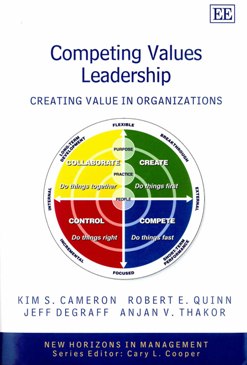 There are several important threads that make up the character of these aspirations. For the most part, they represent business – immediate objectives with commercial principles and professional practices engaged in a source of livelihood – enterprise. Entrepreneurship also shows itself in these aspirations, for entrepreneurs aim high and assume and manage the risks of the enterprise. Professionalism, a calling to high purpose requiring specialized knowledge, intensive education and experience, and a commitment to humankind adds yet another force to aspiration. But in the end, ethics – the discipline of dealing with what is good and bad and with moral duty and obligation – is what enables stakeholders with differing cultures, values, and enterprises to align their interests and assets to achieve their common objectives. As philosophy and ethics professor and noted author Russell Gough explains, “Not your personality, but your character is destiny.”
There are several important threads that make up the character of these aspirations. For the most part, they represent business – immediate objectives with commercial principles and professional practices engaged in a source of livelihood – enterprise. Entrepreneurship also shows itself in these aspirations, for entrepreneurs aim high and assume and manage the risks of the enterprise. Professionalism, a calling to high purpose requiring specialized knowledge, intensive education and experience, and a commitment to humankind adds yet another force to aspiration. But in the end, ethics – the discipline of dealing with what is good and bad and with moral duty and obligation – is what enables stakeholders with differing cultures, values, and enterprises to align their interests and assets to achieve their common objectives. As philosophy and ethics professor and noted author Russell Gough explains, “Not your personality, but your character is destiny.”Developing a Leadership Culture
Because of the ongoing human dynamics involved in the enterprise of project delivery, it helps to visualize a mental model to bring structure, organization and focus to leadership. One of the most effective models for sorting through the complexities of project delivery is one formulated by professors Kim Cameron, Robert Quinn, Jeff Degraff and Anjan Thakor in their book Competing Values Leadership. Their model (illustrated) portrays the integration of purpose, practices, and people and the necessity to collaborate, compete, create, and control. The model highlights action and intended outcomes such as teamwork, beating the competition, speed, breakthrough performance, repeatable quality, etc. Moreover, the model highlights competing values evident in leaders whose strong tendency is to control with structure, process and tools, and those who deplore control as an inhibitor to innovation and breakthrough performance.
When we consider the content of the model, we conclude that most leaders lead from a long suit of characteristics coming from one, or perhaps two, of these quadrants. We also quickly come to the conclusion that although few, if any, are highly skilled in all the quadrants, being skilled in the fundamentals of all quadrants is a goal leaders must strive to achieve if they are to effectively influence behavior in differing situations. For it is true that systems of control are essential to produce consistently repeatable quality. Creative, unconventional thinking fueled by competitiveness moves organizations through incremental to breakthrough change, maybe even changing the very shape of the industry. Building a collaborative environment and caring for people and their families must go beyond providing training, equipment, and a personally meaningful quality of life.
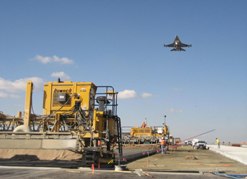 People require leadership they can “trust unconditionally.” For leaders guided by the Competing Values Leadership model, the question becomes, “How much collaboration, competitiveness, creativity, and control are required to achieve performance readiness?” This becomes the measure for “citizen engineers”…as they establish directions and strategies…align people and resources…inspire and help people…to evaluate their effectiveness not just as engineers, but as leaders.
People require leadership they can “trust unconditionally.” For leaders guided by the Competing Values Leadership model, the question becomes, “How much collaboration, competitiveness, creativity, and control are required to achieve performance readiness?” This becomes the measure for “citizen engineers”…as they establish directions and strategies…align people and resources…inspire and help people…to evaluate their effectiveness not just as engineers, but as leaders.The philosopher Aristotle posed the classic question, “How much is enough?” The model then is a clarion call for judgment, the right balance of competing positive values.
Judgment ultimately separates leaders as they apply their clusters of knowledge, skills, and behavior (interpersonal savvy, business savvy, communication skills, strategic thinking, change management, etc.) Leaders’ critical judgment in answering the “How much is enough?” question is what shapes the culture of the enterprise.
Building a leadership culture is not merely a philosophic approach to project performance; it becomes a business strategy that demands steadfastness and flexibility. Establishing and maintaining core values and strategic intent takes steadfast leadership. At the same time, as major forces shift and stabilize, gather momentum and subside, flexibility and adaptability to changing business currents must carry the day.
Defining Engineering Leadership
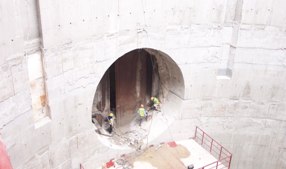 What defines leadership? Webster’s online dictionary devotes more than 6,000 words to the subject. Personally, I favor Colin Powell’s definition, which states “Leadership is the art of accomplishing more than the science of management says is possible.” Given the ever-rising prowess of technology in the world, I would personally add a technological dimension and say “Leadership is the art of accomplishing more than the science of management and the promise of technology say is possible.”
What defines leadership? Webster’s online dictionary devotes more than 6,000 words to the subject. Personally, I favor Colin Powell’s definition, which states “Leadership is the art of accomplishing more than the science of management says is possible.” Given the ever-rising prowess of technology in the world, I would personally add a technological dimension and say “Leadership is the art of accomplishing more than the science of management and the promise of technology say is possible.”Ultimately, leadership is defined in the context of the enterprise – its purpose, core competencies, resources, situation, aspiration, and frame of mind.
Seeking Abundance
Few attitudes are more dispiriting than the ones expressed by those holding that life and enterprise is nothing more than a zero sum game… a game with finite limits of economic, social, political opportunity. To view life and the world as nothing more than a game of winners and losers, haves and have-nots; to live out paradigms like eat or be eaten, second place is the first loser, could mean that most of humankind will spend their lives marginalized or in the loss column.
Leaders must reject these foolish notions.
Professor Kim Cameron’s research at the University of Michigan, Ross School of Business, challenges that frame of mind. He bases his research on “abundance” thinking and challenges leaders to think positively. He cites that all living beings turn to the light for life. Light gives us energy, vision, positive ideas, and edge to create new opportunity and free up the untapped abundance of the world.
More than that, however, he instructs business leaders to be positively deviant. His leadership model shapes his research and outlines humankind’s potential…that is, how do we shape an environment where our people and our enterprise operate in a condition he calls Olympic Fit – where we play in the “zone,” play at our very best…flawless perfection, flourishing, giving, respectful, virtuous…the highest state of the human condition. The ancient Greeks debated the meaning of pure perfection until Aristotle wrote in Metaphysics that perfection is so good, no more can be added of the kind – it is complete and attained its purpose.
Great things happen when we act with a positive frame of mind. We all know it. Robert Quinn’s books Deep Change, Change the World, and Building the Bridge as You Walk on It complement Professor Cameron’s abundance leadership model. In his works, Quinn shares powerful ideas on how to live and lead with a positive frame of mind. His research finds that most people are self centered, comfortable, closed, and externally directed. He calls it the natural states of being, but hardly the position (frame of mind) of positive leaders.
Research data and personal experience tell us that we all find ourselves in Quinn’s natural states to varying degrees most every day. If we look carefully at those natural states we discover that these characteristics form the position of followers. “Citizen engineers” who move from the natural position to the position of leadership make huge personal change:
- They change their perspective from self to others
- They reject comfort for a more vulnerable walk, naked and alone down pathways of uncertainty, buoyed by the power of their vision
- They shift from being closed minded to being open and inclusive
- They move from being driven by external stimuli, like teenager groupies or industry trend followers, to extraordinary uniqueness like Gandhi, Placine, or Sir Edmund Hillary.
Clearly, to make such movements and make them stick we must manage ourselves as well as we do our craft. We must move from seeing huge and rapid change curves as inhibitors and see them as opportunity curves full of potential, promise, and possibilities.
With all the more formal research and experiential writings on the subject of leadership, we also find some realities. Leaders work on the shoulders of managers. Managers and technologists are the bedrock of our industry. Management and technology are known to be hard and cold. John Kotter, in his book Leading Change, argues, on the other hand, that leadership may be soft, but it is hot – a differentiating competency. Leadership is confusing as hell and leaders love a mess. They groove on ambiguity. They are forgiving. Leaders are often not the best performing, smartest people in the room. Rather, they represent the character (competencies, commitment, caring, and integrity) that the members of the group think can best guide them toward achievement of their common objectives. Leaders love playing with other leaders just as champions love playing with other champions. They understand the ultimate power of relationships, which is most often their most valuable asset. They wire the joint with trust. They have moved on from the quest to be the best in the world to being best for the world. In the end, engineer leaders realize that it is not the song, it is not the singer, but the conjunction of the two that creates the emotional bridge that delivers the rush and fires the internal belief that their clients, their teams, their communities, and they themselves can be extraordinary.
That is when they truly become “citizen engineers.”
Resources
With special permission and thanks to CH2M HILL Foundations of Leadership partners:
Cameron, Kim S., Professor of Management and Organization, Ross School of Management at the University of Michigan, Ann Arbor, Michigan, “Competing Values Leadership, Making the Impossible Possible.”
Jones, Dewitt, The Nature of Leadership” and “Celebrate What’s Right with the World.”
Quinn, Robert E., Professor of Organizational Behavior and Human Resource Management, Graduate School of Business, University of Michigan, Ann Arbor, Michigan, “Deep Change, Change the World, and Building the Bridge as you Walk on it.”
Author Biography
Joseph “Bud” Ahearn, Senior Vice President for CH2M HILL Companies, Ltd., is well known and respected for his executive leadership in the engineering business lines of transportation, environment, water, industrial design, and related infrastructure. Having built one of the first leadership development programs for CH2M HILL, he has over 45 years experience as a mentor, an achievement for which the Society of Military Engineers recently honored him as Mentor of the Year.
Previously, he served as Vice Chairman of the CH2M HILL Board of Directors, where he worked in collaboration with the CEO and business group leaders to effectively represent the firm and was responsible for strategic planning, governmental affairs, strategic communications, and leadership development. During his 15-year career at CH2M HILL, Ahearn has served in several capacities, Transportation Business Group President, Eastern Region Manager and Senior Vice President, Federal Programs Director, and Principal-In-Charge for two major transportation corridor projects in California. Currently he is CH2M HILL’s executive responsible for delivering the $12 billion U.S. Air Force’s Korea Relocation Program.
Prior to joining CH2M HILL, Mr. Ahearn had a distinguished military career spanning three decades, where he achieved the rank of Major General in the U.S. Air Force. During his 34 years of experience with the Department of Defense, Mr. Ahearn was responsible for shaping financial strategy, developing budgets, and executing infrastructure programs totaling more than $7 billion annually. As the Senior Civil Engineer for the U.S. Air Force, he directed the development and operations of all U.S. air bases around the world.
